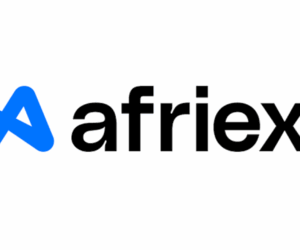Nigeria’s NIBSS Instant Payments (NIP) has quietly become the lifeblood of everyday digital money movement, powering everything from mobile transfers to market stalls, operating around the clock and settling payments in just seconds.
Launched in 2011 by the Nigeria Inter-Bank Settlement System (NIBSS), NIP was created to replace cumbersome multi-day interbank transfers with an efficient, real-time system. Today, it is Nigeria’s most widely used payment rail, available through internet banking, USSD, POS, ATMs, fintech apps, and more.
Data shows how critical NIP has become. In just the first quarter of 2025, Nigerians made NIP transactions totalling ₦284.9 trillion, a 22% jump from Q1 2024. Meanwhile, by 2023, total cashless transactions hit ₦611 trillion across 9.7 billion volumes, with NIP as the backbone.
How NIP gets ₦10,000 across banks in seconds
When you tap “send” on your bank app or dial that familiar USSD code to transfer ₦10,000, the whole journey begins. Your bank wraps up the payment details into a secure message (today it’s often ISO-8583, though ISO-20022 is slowly making its way onboard), and fires it off to NIBSS, the central switch that keeps everything humming.

Within seconds, often a crisp 2 to 5, NIBSS validates the format, checks the list of banks it knows, and routes the payment to the right destination.
Once routed, the beneficiary’s bank takes over the baton, confirming the account exists (sometimes via NIBSS’s Name Enquiry Service), credits it, and sends a success message right back to the sender’s bank, again, usually in those fleeting seconds that make NIP feel like magic.
You and the recipient each get an alert almost instantly. It’s tempting to think that the cash has moved, but behind the scenes – settlement, the banks balancing the books – lags until later.
NIP works on a deferred net settlement model, which means actual interbank settlement is done in batches, often several times a day, through the Central Bank of Nigeria’s RTGS network.
This split between visible instant transfer and deferred financial settlement is the genius of NIP. It separates the user experience from the messy logistics, serving both immediacy and systemic trust.
Read also: Here is why fintech transactions are faster than traditional banks
Behind the scenes of Nigeria’s payments upgrade:
Beyond individual transfers, NIP has quietly morphed into the engine of broader innovation in Nigeria’s payments universe. It’s not just for person-to-person activity anymore. Over the years, it’s become the backstage star orchestrating everything from automated billing to merchant collection services.
Take direct-debit mandates, for example, those standing instructions that pull payments automatically from your account. Today, they run on NIP, just as request-to-pay prompts and dispute resolution workflows do. They’re no longer fringe features, but expansions of NIP’s underlying strength as a dependable, real-time financial channel.
In fact, NIBSS says that NIP’s APIs facilitate these services, including beneficiary validation, scheduled debits, and transactional status queries, making every action happen swiftly and securely.
It’s here that NIP transcends its early roots and becomes a platform-builder. Merchant payments, through NIBSS’s mCASH+ initiative, ride on NIP’s rails to deliver instant value to sellers using just USSD, even without internet. Dell, the market vendor or the utility app developer, both tap into the same reliable switch behind those pulses of value.


But the real leap arrived with the National Payment Stack (NPS). Launched in mid-2025, this next-generation infrastructure builds right on NIP’s legacy.
Think of it as NIP with superpowers: ISO-20022 messaging, cross-border readiness, richer data transfer, direct-debit and request-to-pay as out-of-the-box features, smarter fraud profiling, API-driven integration within 48 hours, and full visibility into settlement positions.
It’s designed to be the unified foundation for every financial player in Nigeria, including banks, fintech platforms, government agencies, and even telcos, to plug into a smarter, faster, more inclusive payments future.
Why NIP works and what sets it apart:
- Trust and finality: NIP mimics cash – instant, reliable, irreversible. That’s why it’s become the preferred option for both businesses and everyday Nigerians. The Name Enquiry and Transaction Status Query tools also build confidence.
- Ubiquitous coverage: Connected to all major banks, microfinance institutions, MMOs, and fintech platforms, NIP is the nervous system of Nigeria’s banking network.
- Economic game-changer: Uplifted by the cashless policy and pandemic-era restrictions, NIP helped drive digital finance forward, saving money, growing inclusion, and powering innovation. In 2021, Nigeria ranked sixth globally in developed real-time payments markets, driven by NIP.


Can financial institutions bypass NIP?
Technically, no financial institution licensed to hold customer funds can bypass NIP for interbank transfers, as NIP is the mandatory centralised switch for instant interbank payments. However, some fintech platforms and other non-bank players have tried workarounds:
- Outward transfers only
NIBSS issued a directive (December 2023) requiring banks to remove non-deposit-taking institutions, like Payment Solution Service Providers (PSSPs), switching companies, and super agents, from their NIP inward (beneficiary) lists. These entities can still facilitate outward payments to bank accounts, but cannot receive transfers themselves. - API gateways and partner models
Some fintech platforms and Payment Service Banks (PSBs) use NIBSS API interfaces or partner with banks to initiate NIP transfers without being direct beneficiaries themselves. This technically means they’re leveraging NIP under the hood but through sponsoring banks, so they aren’t “bypassing” it, just routing through partners.
In effect, NIP is the central spine of instant interbank payments in Nigeria. You can’t bypass it, but non-bank entities can use alternative “entry points” only via authorised partners.
But the system faces pressure like balancing volume surges, failed transactions, and technology upgrades.








